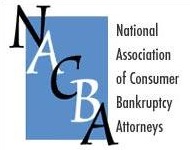Be an advocate-your client has enough opponents.
It’s no accident that the word for lawyer in Scotland, Belgium and India is advocate.
If we do our jobs for bankruptcy clients well, we are advocates for their interests at every stage of the game.
Yet I hear lawyers assuming that there is a known and pat answer to every question under BAPCPA and that the answer is the one the trustee proffers.
If I had a nickel for every time I’ve heard, “my trustee won’t allow it”, I could buy a very nice dinner out.
Maybe your trustee “won’t allow it” because you’ve got it wrong.
But I’ll bet there’s an equal chance that either you haven’t laid out the entire issue, or the trustee has a point of view expressed in that position, that may or may not be shared by the judge.
And you are too timid to find out which it is.
Who’s on first
Remember, the trustee is just a party in interest, not a decision maker.
If I, as debtor’s counsel, have a dispute with the trustee that we can’t resolve, the trustee doesn’t automatically win. The judge earns her salary by deciding disputes.
Client as captain of the ship
At the end of the day, the client is the captain of the ship. The client establishes the goals, or the destination. As lawyers, we’re the navigators. It’s our job to figure out how to get the client from here to there.
If there are rocks or shallows in the path of our “ship”, it’s the captain’s job to decide whether we sail through them, or skirt them.
The client needs to hear what the risks are and the options if our position is rejected by the court. The decision about how to proceed is, in the end, that of the client.
When the client has made a choice, then we navigate our way down that path.
Chart your course
When you have an issue that can go either way, prepare your argument for the judge. You hope to persuade the trustee before you get there, but you have to start with a case that will play in court.
Read the statute and the cases in your circuit on the issue. Understand the facts. Find the logic and sound policy in the result you advocate. Be prepared to say why this is the better solution to an unresolved issue.
We owe our client a vigorous and statute-based evaluation of the issues and a willingness to argue for a well grounded position.
Image courtesy of johnny_automatic.








